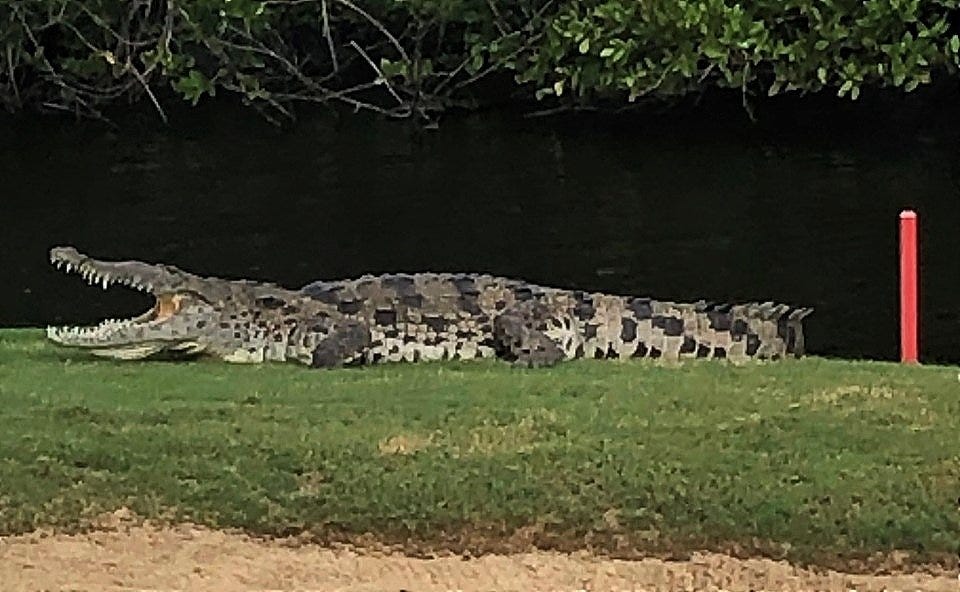NORTH PALM BEACH, Florida — Golfers and residents in North Palm Beach have a new, permanent neighbor: a 7-foot American Crocodile.
The Village of North Palm Beach notified residents of a crocodile that is living in the ponds of the North Palm Beach Country Club golf course. Since crocodiles are a threatened species, federal law does not allow the village to remove the animal.
The Florida Fish and Wildlife Conservation Commission has posted a sign on the golf course to warn golfers and others. Photos and videos show the crocodile lurking in the water and coming up to the fairway.
The animal appears to be between 7 and 8 feet long, according to pro shop staff at the country club. Staff said the crocodile is seen sunning itself around the eighth hole — north and east of Country Club Drive — nearly every day and eating fish in the pond there at night.
Crocodiles rarely interact with humans because of their shy, reclusive nature, according to FWC. However, as with any predatory animal, people should use caution when near them.
A crocodile spotted on the North Palm Beach Country Club golf course. The village has advised golfers it cannot remove the animal because it is a threatened species.
Although they may look similar, alligators and crocodiles in Florida have a few distinct differences.
Here’s how to identify a crocodile:
Color: Grayish green on its back.
Stripes: Dark stripes on tail and body.
Exposed teeth: Fourth tooth on lower jaw exposed when mouth is closed.
Snout shape: Narrow and tapered.
Habitat: Crocodiles are primarily are found living in brackish and saltwater habitats such as ponds, coves and creeks of mangrove swamps.
Here’s how to identify an alligator:
Color: Black coloring on its back.
Stripes: Light stripes on tail and body.
No exposed teeth when the mouth is closed.
Snout shape: Broad and rounded.
Habitat: Alligators are mostly freshwater animals, they can survive in salt or brackish water for several hours or even days, according to the National Oceanic and Atmospheric Administration.

